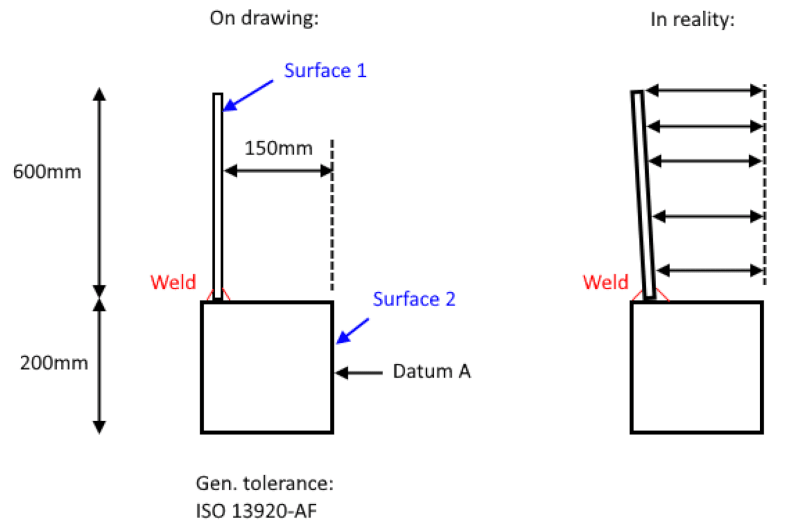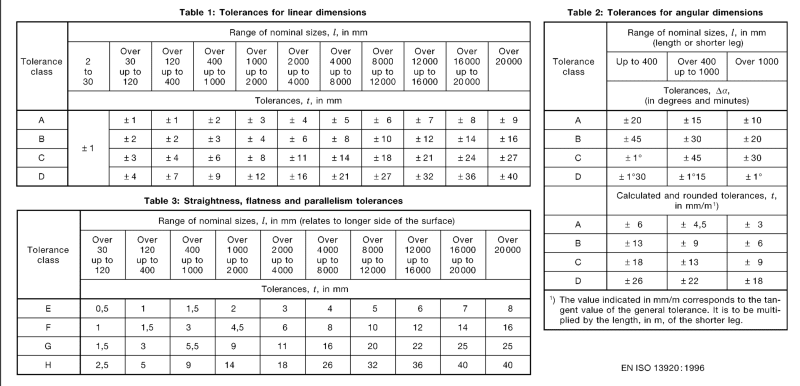David G
Mechanical
- Aug 25, 2022
- 1
Hi,
See the sketch below. Here I've made lets say just a square machined cube, with a welded plate on top:


For the simple dimensions above, as I understand it ISO 13920 implies a tolerance for the:
- Linear dimension 150mm = 150 ±1mm
- Flatness of surface 1, nominal size l 600mm = Flatness tolerance 1,5mm
- Flatness of surface 2, nominal size l 200mm = Flatness tolerance 1mm
- Parallelism of surface 1 to surface 2, nominal size l 600mm (?) = Parallelism tolerance 1,5mm
Okay see lets see how this would go when measuring the linear dimension and parallelism:
For the linear dimension one would measure multiple points from surface 2 to surface 1:
1: Does this imply we measure from surface 2 as it is a theoretical datum A? (Average out the surface). Or can we chose random points on surface 2, which may be curved?
2: Shall all points be within 150±1 from datum A individually? Or their average? If its individually, isnt this the same as a parallelism tolerance of 2mm to datum A?
3: If 150±1 already implies measuring individual points from a datum A, and we have a parallelism tolerance of 1,5mm on the side, isnt this the same as controlling the linear dimension to be 150±0,75 instead?
See the sketch below. Here I've made lets say just a square machined cube, with a welded plate on top:


For the simple dimensions above, as I understand it ISO 13920 implies a tolerance for the:
- Linear dimension 150mm = 150 ±1mm
- Flatness of surface 1, nominal size l 600mm = Flatness tolerance 1,5mm
- Flatness of surface 2, nominal size l 200mm = Flatness tolerance 1mm
- Parallelism of surface 1 to surface 2, nominal size l 600mm (?) = Parallelism tolerance 1,5mm
Okay see lets see how this would go when measuring the linear dimension and parallelism:
For the linear dimension one would measure multiple points from surface 2 to surface 1:
1: Does this imply we measure from surface 2 as it is a theoretical datum A? (Average out the surface). Or can we chose random points on surface 2, which may be curved?
2: Shall all points be within 150±1 from datum A individually? Or their average? If its individually, isnt this the same as a parallelism tolerance of 2mm to datum A?
3: If 150±1 already implies measuring individual points from a datum A, and we have a parallelism tolerance of 1,5mm on the side, isnt this the same as controlling the linear dimension to be 150±0,75 instead?
